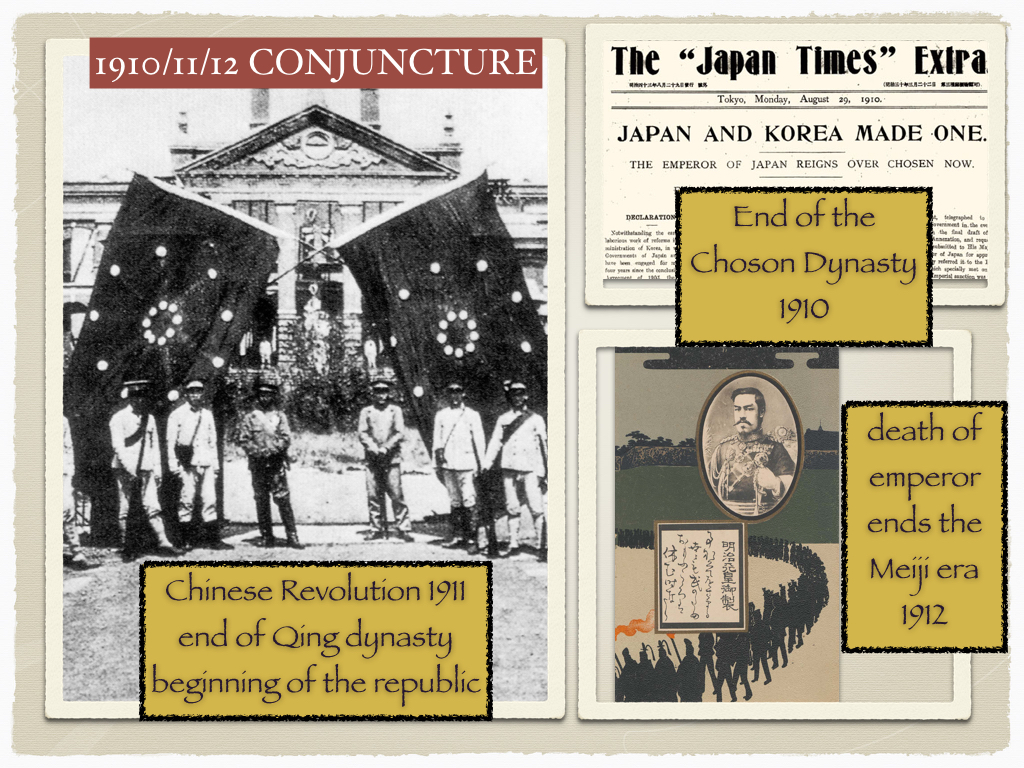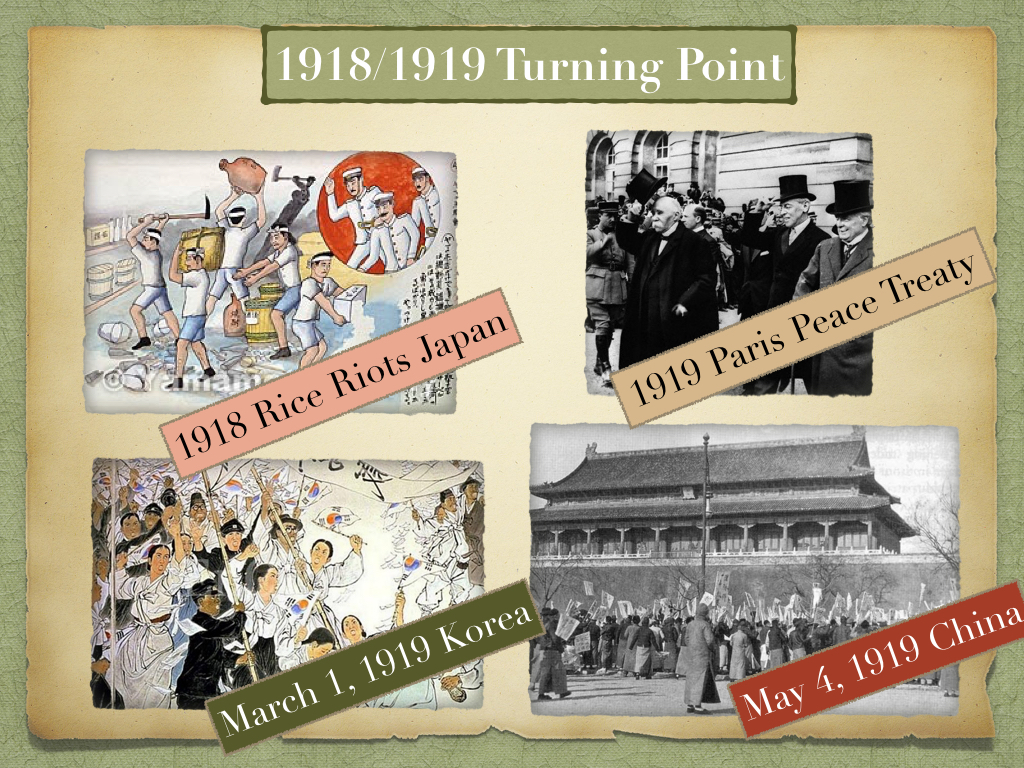asia midterm - MODERNIZATION and INTERNATIONALISM
1/29
There's no tags or description
Looks like no tags are added yet.
Name | Mastery | Learn | Test | Matching | Spaced |
|---|
No study sessions yet.
30 Terms
developed the term “origins of the modern world”
robert marks
the imperial palace was relocated from kyoto to tokyo in
1869
dates of the meiji period
1868 to 1912
dates of the meiji restoration
1868 to 1889
predominant historical narrative regarding meiji japan
“the plucky japanese” brave and naive
the charter oath of 1869
deliberative assemblies shall be widely established and all matters decided by open discussion.
all classes, high and low, shall be united in vigorously carrying out the administration of affairs of state.
the common people, no less than the civil and military officials, shall all be allowed to pursue their own calling so that there may be no discontent.
evil customs of the past shall be broken off and everything based upon the just laws of Nature.
knowledge shall be sought throughout the world so as to strengthen the foundation of imperial rule.
the four major meiji projects
“revere the emperor” - abolish the tokugawa order
“rich country, strong military” - build nation-state institutions
“civilization and enlightenment” - creating a national community/identity
“revise the unequal treaties” - remapping japan in the world
MODERNIZATION - photo of the meiji oligarchy
MODERNIZATION - photo of saigo takamori, who resisted the regional social tokugawa order and failed
modernizaiton 1. Why was Japan the only East Asian country to build a modern nation-state in the second half of the 19th century?
japan had to first negotiate the unequal treaties, rearrange their decentralized government, strengthen the military, and restructure the social order before they could
modernization 2. How did Japan "modernize"?
the meiji restoration and meiji constitution (1889) were huge parts of japanese modernization with much of the meiji tradition being completely new to japanese culture
modernization 3. How did constitutionalism and imperialism (the two pillars of political modernization) relate to each other in Meiji Japan?
the major changes were the creation of a national constitution and the revision of the unequal treaties to establish japan as an international power
came up with “cultural internationalism”
akira iriye
internationalism 1. How might we understand internationalism as a historical development in relationship to nationalism?
nationalism and internationalism were dichotomous, polar, parallel, or consecutive development
internationalism 2. How did internationalism resonate in East Asia in the first decades of the 20th century?
economic internationalism: license to modernize across national borders as well as making common cause with socialists and workers worldwide
cultural internationalism: manifested by the proliferation of study-abroad, the translation of all importnat western poltiical thought and literature, shared new media, and the experience of either no or only reluctant admission to international organizations
legal internationalism: first and foremost extraterritoriality and treaties in general that could be manipulated by asians to serve specific goals
internationalism 3. 1910/1911/1912 turning point; 1919 turning point


internationalism 4. How did Korea lose its sovereignty under international law?
the end of the russo-japanese war (the treaty of portsmouth, nh) gave japanese a protectorship over korea, meaning that korea essentially lost all of its individuality as a country
three types of internationalism
economic internationalism: world brought together by capital flows; about modernization beyond national borders and making common cause with socialist resistance worldwide
liberal capitalist: ensure growth of modern industrialism
socialist: workers unite across nations to end oppressive state systems
cultural internationalism: international organizations, typically with seats in Europe; about study abroad, translated foreign works, shared new media, and reluctant admission to international organizations
legal internationalism: laws regulating international relations and the conduct of war, among civilized nations; about extraterritoriality and treaties
taft-katsura agreement (july 1905)
us and japan trade philippines for korea
second anglo-japan alliance (august 1905)
britain and japan trade korea for india/burma
japan-korea / eulsa treaty (november 1905)
deprived korea of its diplomatic sovereignty
made korea a protectorate of japan
signing was coerced by japan
second international conference on peace in the hague, 1907
confirmed 1899 resolution on the peaceful settlement of international disputes, customs of war, treatment of pows, and created a judicial arbitration court
1918/1919 conjuncture
1918 rice riots in japan
1919 paris peace conference
march 1, 1919 movement in seoul
may 4, 1919 movement in beijing
1918 rice riots across japan
caused by japanese economic boom, pressured politicians to negotiate better terms for japanese workers and farmers
pan-asianism
conceived differently by individuals across asia in civilizational, political, national, and social terms
ideologically conceived as anti-western by emphasizing a transnational asian racial unity
nonetheless adopted a western conception of “race”
led by asian liberation revolutionaries in exile in japan (tokyo/shanghaio as a hub of pan-asian intellectual activity)
institutionalized in numerous pan-asian associations well beyond east asia, supported by some westerners
march 1 movement
declared korean independence from japanese protectorate
may 4 movement
attack of pro-japan politicians in china, attack on confucianism and the “old china”, women’s liberation, founding of the chinese communist party
INTERNATIONALISM
INTERNATIONALISM - french cartoon of japanese protectorate over korea